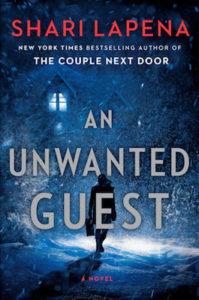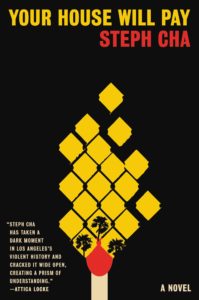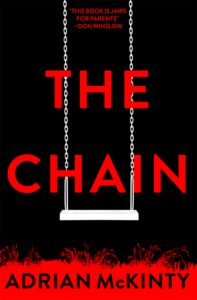When plotting a tale of suspense, any writer worth her salt understands the importance of distraction—intriguing details that lead the reader down a path of uncertainty, false clues intentionally planted to mislead, and of course the phenomenon of the unreliable narrator. This is why the red herring is a staple in mystery writing. These sneaky devices can serve to ratchet up the suspense as the author gleefully provides twist and turns throughout the book.
When writers use the art of distraction, the reader remains off balance, constantly wondering if they will ever gain a sure foothold on the story. The best writers understand that red herrings are not simply shiny objects to avert your gaze—they are well-constructed traps the reader can’t help but enter, often against their better judgment.
For me, what happens in my mind while I read is just as important as what happens on the page. It’s the experience of reading a book that stays with me. The way my pulse pounded during certain scenes. The feeling of uncertainty that made me stay up later and read just one more chapter (and then one more after that, because I won’t be satisfied until I know the truth). The way the writer took me on a rollercoaster traveling through the dark, at the mercy of the treacherous track with no idea how it all will end.
Is it possible to include too many red herrings? There’s certainly no magic number, but the best writers understand how to distract in covert ways, never drawing too much attention to the false clues they’re planting. Understatement works best, and my favorite reading experience is finishing a book and then immediately having the desire to start over and read again from the very beginning, armed with the knowledge I now have, so that I can dig in and reassess everything I thought I knew.
Red herrings keep the reader turning pages, yes, but they also keep the reader wondering what the hell is actually going on. Just when you think you’d got it all figured out, another clue appears. Is this one a red herring or the real thing? These books play with the reader’s mind in wonderfully twisted ways, using red herrings masterfully and keeping the reader guessing. And second-guessing.

The Witch Elm by Tana French
French’s masterfully plotted tales of suspense have earned her the devotion of fans, loyal readers who eagerly await her next book. The Witch Elm begins with Toby, a generally likeable nice guy, who has just been brutally attacked by burglars. He’s a bit foggy on all the details, and in need of assistance while recovering, so he moves back into the family homestead with his uncle. The place is full of teenage memories for Toby and at first the place is a comfort—until things start to get a little creepy. A skull is found in the elm tree in the garden, and so police descend onto the property and begin their investigation. Is Toby simply an innocent man lunged into unfortunate circumstances? French might want you to believe that, but as each chapter unfolds, she exposes Toby’s worst fears, using them to her advantage and laying fresh (and possibly false) trails at every turn.

An Unwanted Guest by Shari Lapena
This story of murder and mayhem over one weekend at a snowed in hotel has drawn many comparisons to the work of Agatha Christie, and rightfully so—Lapena leaves no stone unturned as she plants red herrings, distracting the reader as much as possible. Combine the claustrophobic setting with a cast of characters carrying metric tons of secrets and Lapena has the perfect recipe for a page-turning mystery. There’s the seemingly happy young couple on a romantic weekend. There is the former journalist who seems to be recovering from some type of trauma. There’s the older couple hoping to resuscitate their nearly dead marriage. But what about the handsome man travelling alone? Isn’t he the high profile lawyer who was accused of murdering his wife? Just when you think you’ve got a handle on this treacherous snowbound weekend, Lapena produces red herrings that have you frolicking down the wrong path time and time again.

The Cutting Season by Attica Locke
Caren is caretaker for the grounds of Belle Vie, a former plantation that now provides a setting for high price tag weddings and historical reenactments for school children.
When something (an animal?) digs up a woman’s body, Caren must wonder about the secrets of the place she calls home. Caren’s mother worked at Belle Vie, too, and so Caren grew up on the grounds. She’s familiar with its beauty, but also it’s haunting history. But is there something ugly brewing at Belle Vie? And what about the employee who can’t be accounted for? Locke’s characters are vivid and the pacing pitch perfect. She spins a compelling mystery with plenty of doubts and uncertainty. As Caren is drawn further and further into the dead woman’s story, she begins uncovering things that are perhaps best left buried.

Watch the Girls by Jennifer Wolfe
This book has it all—missing girls, an eccentric filmmaker, a small town full of strange characters—all to distract you, that is. Liv is an out of work actress who had her best years during their teen years. Her younger sister disappeared years ago at a Hollywood party. Financially unstable and looking for direction, Liv is hired by a mysterious Internet stranger to investigate a series of kidnapping in a remote locale famous for the horror movies that were shot there years ago. I was confident I knew the players and their motives, as I eagerly devoured Wolfe’s red herrings and was left shocked by the truth in the end.

Your House Will Pay by Steph Cha
While not a mystery in the conventional sense, Cha’s novel is the gripping crime thriller about a shooting in Los Angeles that tears a community apart. The narrative, unfolding in various timelines, is uncovered slowly, and the main crux revolves around a main character, Grace, who must come to terms with her family’s involvement in the murder. Cha, who is also the author of the excellent Juniper Song mysteries, reveals details on a need to know basis, her own art of distraction, and eventually lets the simmering tension roll to a full boil.

The Chalk Man by C.J. Tudor
As you read this first novel by Tudor, you’ll collect puzzle pieces, but you’ll have little idea what they all mean until the final chapters. The narrative unfolds between past and present, as Eddie attempts to uncover the truth behind a disturbing childhood event. He and his friends developed a secret language in chalk, but someone figured out the code—and used it to lead them to a dismembered body. As adults, the four friends receive messages that seem to be from the mysterious figure in their past. Who is behind it? When one of the friends turns up dead, Eddie must wade deeper into the past, and Tudor plants plenty of distractions along the way.

My Sister the Serial Killer by Oyinkan Braithwaite
This short novel is best read in one sitting—which is perfect, because once you’ve started, you’ll have a difficult time putting it down. Brathwaite’s writing is darkly funny, with vivid and often unsettling imagery. The narrative begins with Korede lamenting how hard it is to clean up after her sister, Ayoola. She’s not talking about a messy pile of clothes in the bedroom though. She’s lamenting the difficulty of scrubbing blood from the creases of a bathtub. Whose blood? Why, her sister’s latest victim of course. Given the title, you might wonder if there’s a mystery at the core of this book. Well, this isn’t the first time Korede has cleaned up for her sister Ayoola. Will it be the last? And what about that handsome doctor Korede is attracted to, the one Ayoola seems to have her eye on?

The Chain by Adrian McKinty
This page-turner reads as if propelled by rocket fuel. From the very first page, we’re hooked into the main character’s nightmare. Her daughter has been kidnapped, but her captors will release her—as long as main character kidnaps another child and keeps the titular chain alive. The premise requires that you read closely. McKinty makes you feel as though everything is a clue. I found myself reading and taking in every detail, trying to assess for myself when he was leading me down the right path and when he was using the art of distraction. I was looking for clues on each page, wondering which McKinty weaves plenty of distraction into this tale—and even when you think you’ve figured who has done it, you will still be at a loss for why—and turning pages furiously to uncover the truth behind this sinister game.

















